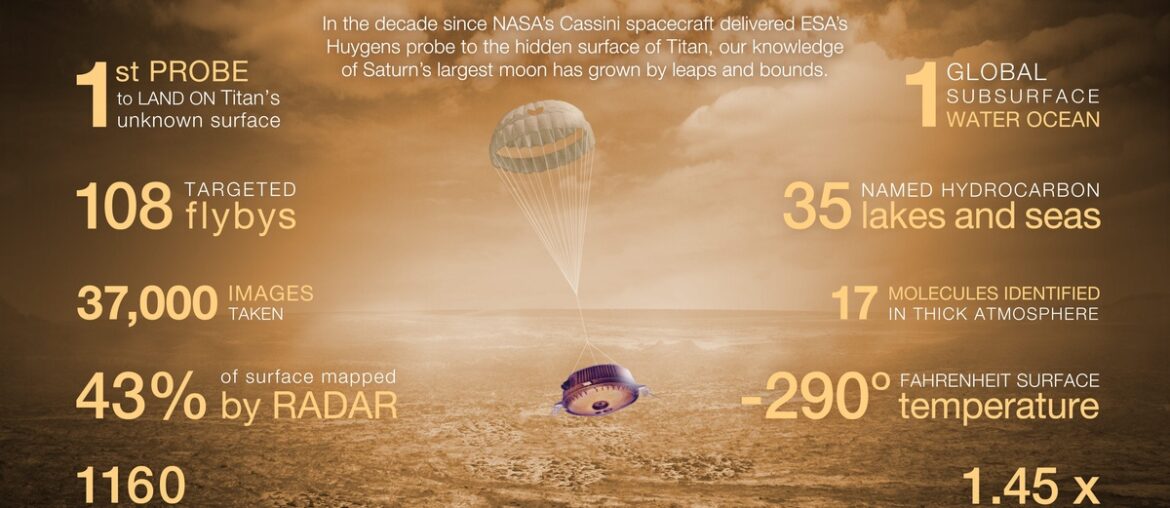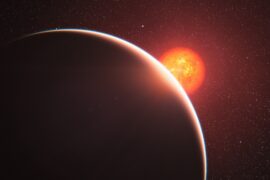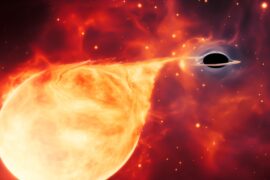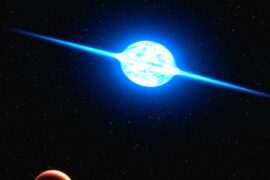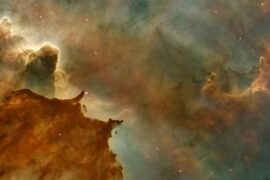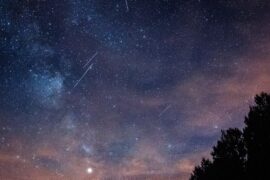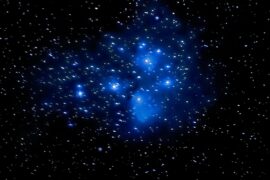Saturn’s system includes a wide range of natural satellites, from tiny ring-embedded objects to distant irregular bodies, and tracking them helps us understand the planet’s history and dynamics. A clear, ordered list makes comparisons and discovery trends easy to follow.
There are 101 Saturn Moons, ranging from Aegaeon to Ymir, and this page gathers their basic facts in one place. For each moon the columns are Discovery year,Orbit (km),Diameter (km); you’ll find below.
How are these moons named and grouped?
Moon names typically come from mythology and are approved by the International Astronomical Union; scientists also group them by orbit type (ring shepherds, inner regulars, distant irregulars) and similar physical traits, which helps when scanning the list for patterns or origins.
Could this list change, and how often are new moons added?
Yes—improvements in telescopes and data analysis occasionally reveal new tiny satellites or revise orbits; lists are updated as discoveries are confirmed, so check the date on any compilation and the discovery year column you’ll find below for recent changes.
Saturn Moons
| Name | Discovery year | Orbit (km) | Diameter (km) |
|---|---|---|---|
| Pan | 1990 | 133,584 | 28.4 |
| Daphnis | 2005 | 136,505 | 7.6 |
| Atlas | 1980 | 137,665 | 30.2 |
| Prometheus | 1980 | 139,380 | 86.2 |
| Pandora | 1980 | 141,720 | 81.4 |
| Epimetheus | 1966 | 151,410 | 116.2 |
| Janus | 1966 | 151,460 | 179.0 |
| Aegaeon | 2008 | 167,500 | 0.66 |
| Mimas | 1789 | 185,539 | 396.4 |
| Methone | 2004 | 194,440 | 3.2 |
| Anthe | 2007 | 197,700 | 1.8 |
| Pallene | 2004 | 212,280 | 4.4 |
| Enceladus | 1789 | 237,948 | 504.2 |
| Tethys | 1684 | 294,619 | 1,062.2 |
| Telesto | 1980 | 294,619 | 24.8 |
| Calypso | 1980 | 294,619 | 21.4 |
| Dione | 1684 | 377,396 | 1,122.8 |
| Helene | 1980 | 377,396 | 35.2 |
| Polydeuces | 2004 | 377,396 | 2.5 |
| Rhea | 1672 | 527,108 | 1,527.6 |
| Titan | 1655 | 1,221,870 | 5,149.5 |
| Hyperion | 1848 | 1,481,100 | 270.0 |
| Iapetus | 1671 | 3,560,820 | 1,469.0 |
| Kiviuq | 2000 | 11,365,000 | 16.0 |
| Ijiraq | 2000 | 11,402,000 | 12.0 |
| Phoebe | 1899 | 12,948,300 | 213.0 |
| Paaliaq | 2000 | 15,197,000 | 22.0 |
| Skathi | 2000 | 15,641,000 | 8.0 |
| S/2004 S 37 | 2004 | 15,833,000 | 4.0 |
| S/2007 S 2 | 2007 | 16,047,000 | 6.0 |
| Albiorix | 2000 | 16,394,000 | 32.0 |
| Bebhionn | 2004 | 17,153,000 | 6.0 |
| S/2004 S 29 | 2004 | 17,294,000 | 4.0 |
| Erriapus | 2000 | 17,604,000 | 10.0 |
| Skoll | 2006 | 17,665,000 | 6.0 |
| Siarnaq | 2000 | 17,905,000 | 40.0 |
| S/2004 S 13 | 2004 | 18,226,000 | 6.0 |
| Hyrrokkin | 2004 | 18,437,000 | 8.0 |
| Tarvos | 2000 | 18,239,000 | 15.0 |
| Mundilfari | 2000 | 18,628,000 | 7.0 |
| S/2006 S 1 | 2006 | 18,639,000 | 6.0 |
| Greip | 2006 | 18,726,000 | 6.0 |
| S/2004 S 17 | 2004 | 18,843,000 | 4.0 |
| Jarnsaxa | 2006 | 18,891,000 | 6.0 |
| Narvi | 2003 | 19,007,000 | 7.0 |
| Bergelmir | 2004 | 19,076,000 | 6.0 |
| S/2004 S 20 | 2004 | 19,209,000 | 3.0 |
| Hati | 2004 | 19,301,000 | 6.0 |
| S/2004 S 12 | 2004 | 19,655,000 | 5.0 |
| Farbauti | 2004 | 19,784,000 | 5.0 |
| Suttungr | 2000 | 19,838,000 | 7.0 |
| Thrymr | 2000 | 20,259,000 | 7.0 |
| Bestla | 2004 | 20,332,000 | 7.0 |
| S/2004 S 7 | 2004 | 20,477,000 | 6.0 |
| Aegir | 2004 | 20,625,000 | 6.0 |
| S/2007 S 3 | 2007 | 20,742,000 | 5.0 |
| Kari | 2006 | 22,059,000 | 7.0 |
| Fenrir | 2004 | 22,236,000 | 4.0 |
| Surtur | 2006 | 22,347,000 | 6.0 |
| Ymir | 2000 | 22,427,000 | 18.0 |
| Loge | 2006 | 22,895,000 | 6.0 |
| Fornjot | 2004 | 23,374,000 | 6.0 |
| S/2004 S 31 | 2004 | 17,472,000 | 4.0 |
| Tarqeq | 2007 | 18,009,000 | 7.0 |
| S/2019 S 1 | 2019 | 11,496,000 | 2.0 |
| S/2020 S 1 | 2020 | 11,540,000 | 2.0 |
| S/2005 S 4 | 2005 | 11,620,000 | 3.0 |
| S/2004 S 40 | 2004 | 16,429,000 | 3.0 |
| S/2004 S 34 | 2004 | 18,348,000 | 3.0 |
| S/2004 S 22 | 2004 | 19,451,000 | 4.0 |
| S/2004 S 27 | 2004 | 19,634,000 | 4.0 |
| S/2004 S 32 | 2004 | 19,776,000 | 4.0 |
| S/2004 S 25 | 2004 | 20,250,000 | 4.0 |
| S/2004 S 30 | 2004 | 21,118,000 | 3.0 |
| S/2004 S 35 | 2004 | 21,133,000 | 4.0 |
| S/2004 S 23 | 2004 | 21,809,000 | 4.0 |
| S/2004 S 28 | 2004 | 21,836,000 | 5.0 |
| S/2004 S 38 | 2004 | 22,250,000 | 4.0 |
| S/2004 S 24 | 2004 | 22,286,000 | 3.0 |
| S/2004 S 33 | 2004 | 22,645,000 | 4.0 |
| S/2004 S 36 | 2004 | 22,968,000 | 3.0 |
| S/2004 S 26 | 2004 | 23,059,000 | 5.0 |
| S/2004 S 4 | 2004 | 19,959,000 | 5.0 |
| S/2004 S 6 | 2004 | 19,836,000 | 6.0 |
| S/2004 S 41 | 2004 | 16,692,000 | 4.0 |
| S/2004 S 42 | 2004 | 17,761,000 | 5.0 |
| S/2004 S 43 | 2004 | 18,525,000 | 4.0 |
| S/2004 S 44 | 2004 | 18,658,000 | 4.0 |
| S/2004 S 45 | 2004 | 19,268,000 | 4.0 |
| S/2004 S 46 | 2004 | 20,283,000 | 3.0 |
| S/2004 S 47 | 2004 | 20,788,000 | 3.0 |
| S/2005 S 5 | 2005 | 23,230,000 | 5.0 |
| S/2006 S 2 | 2006 | 13,675,000 | 4.0 |
| S/2006 S 3 | 2006 | 21,303,000 | 6.0 |
| S/2006 S 4 | 2006 | 17,737,000 | 3.0 |
| S/2006 S 5 | 2006 | 18,369,000 | 4.0 |
| S/2006 S 6 | 2006 | 18,981,000 | 4.0 |
| S/2006 S 7 | 2006 | 19,746,000 | 3.0 |
| S/2006 S 8 | 2006 | 20,443,000 | 4.0 |
| S/2006 S 9 | 2006 | 22,236,000 | 5.0 |
| S/2006 S 10 | 2006 | 22,382,000 | 3.0 |
Images and Descriptions
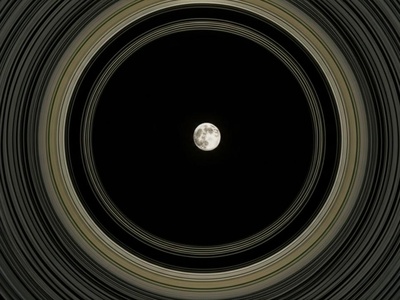
Pan
A small, walnut-shaped moon that orbits within the Encke Gap of Saturn’s A Ring. As a shepherd moon, its gravity is responsible for keeping this gap open and maintaining its sharp edges.

Daphnis
A tiny shepherd moon orbiting in the Keeler Gap of Saturn’s A Ring. Its gravity creates beautiful, wave-like patterns on the edges of the gap as it passes by.

Atlas
A flying-saucer-shaped moon that acts as a shepherd for the outer edge of Saturn’s A Ring. Its distinctive equatorial ridge is thought to be accumulated ring material.
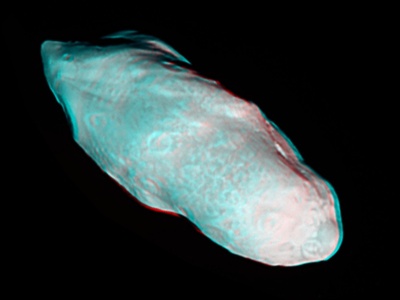
Prometheus
An elongated, potato-shaped moon that acts as an inner shepherd satellite for Saturn’s F Ring. It periodically creates knots and streamers in the ring as it orbits.
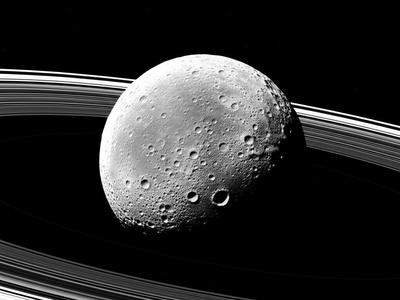
Pandora
The outer shepherd moon of Saturn’s F Ring. It orbits chaotically with its partner, Prometheus, and its gravitational influence helps confine the narrow, braided ring.
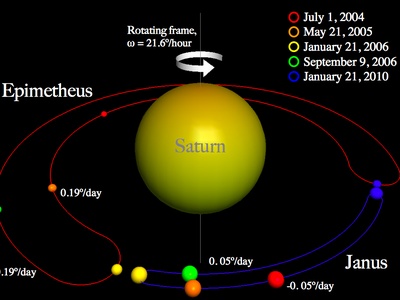
Epimetheus
A small, irregular moon that shares an almost identical orbit with its sibling moon, Janus. Every four years, they perform a gravitational “dance,” swapping orbits with each other.
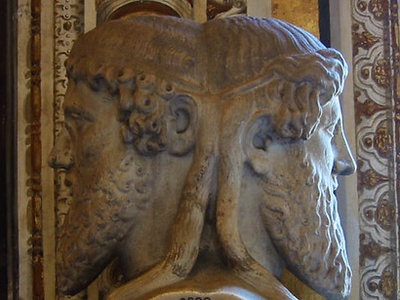
Janus
Slightly larger than its partner Epimetheus, this porous, icy moon shares a co-orbital relationship. The two moons periodically switch their orbital positions in a unique celestial swap.
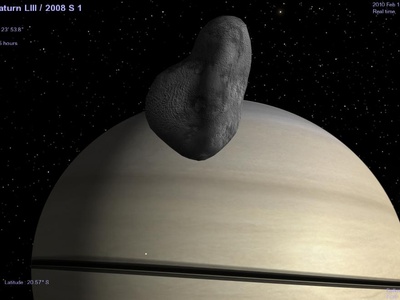
Aegaeon
One of Saturn’s smallest known moons, Aegaeon is a smooth, elongated object that orbits within the G Ring. It is believed to be a primary source of the material that makes up the G Ring arc.
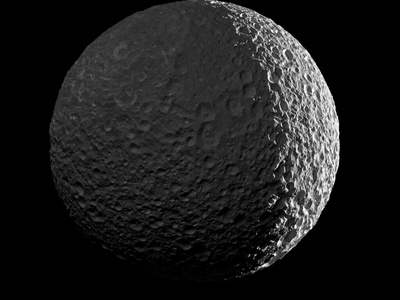
Mimas
Known as the “Death Star” moon due to its enormous Herschel Crater, which is nearly a third of the moon’s diameter. This icy body is tidally locked and helps clear the Cassini Division.
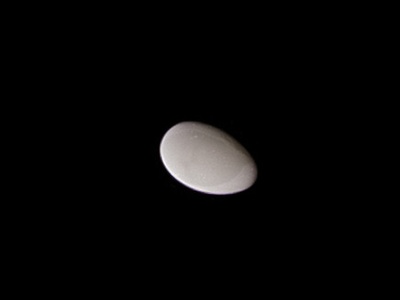
Methone
An exceptionally smooth, egg-shaped moon that is part of a small group called the Alkyonides. Its lack of craters suggests it may be covered in a deep layer of fine, icy dust.

Anthe
A tiny moon orbiting between Mimas and Enceladus within a faint ring arc it helps maintain. Its orbit is noticeably perturbed by the much larger and more massive Mimas.
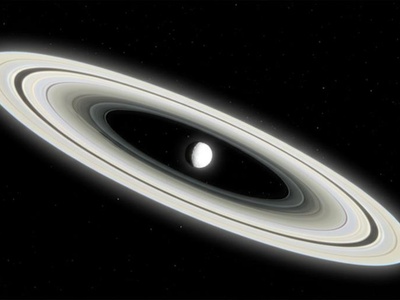
Pallene
A small, faint moon that orbits within its own dusty ring, the Pallene Ring. It is part of the Alkyonides group, along with Methone and Anthe, all discovered by the Cassini mission.
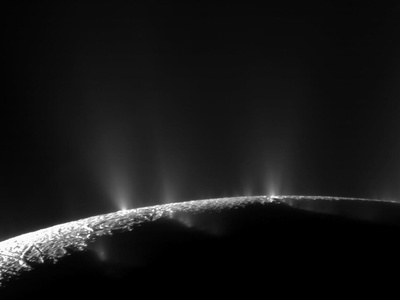
Enceladus
A geologically active world and one of the most reflective bodies in the solar system. It famously erupts plumes of water ice and vapor from its south pole, hinting at a subsurface ocean.
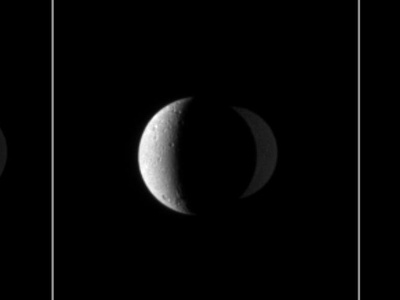
Tethys
A heavily cratered, icy moon dominated by two massive features: the giant Odysseus crater and the vast Ithaca Chasma canyon system, which runs three-quarters of the way around the moon.
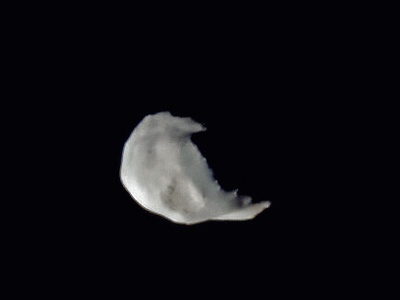
Telesto
A Trojan moon of Tethys, meaning it shares the same orbit but stays in a gravitationally stable point 60 degrees ahead. It is a small, irregularly shaped body.

Calypso
The second Trojan moon of Tethys, trailing 60 degrees behind it in the same orbit. Like its sibling Telesto, it is a small, icy object with a surprisingly smooth surface.
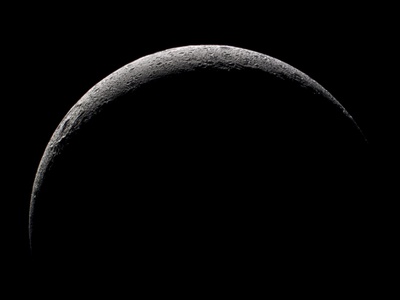
Dione
A dense, icy moon known for its bright, wispy ice cliffs on its trailing hemisphere. These cliffs were formed by tectonic fractures, revealing fresh ice from below its ancient, cratered surface.
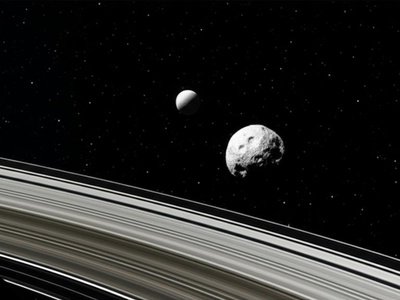
Helene
A Trojan moon of Dione, co-orbiting 60 degrees ahead of the larger moon. It is a small, irregular body and is sometimes referred to as Dione B.
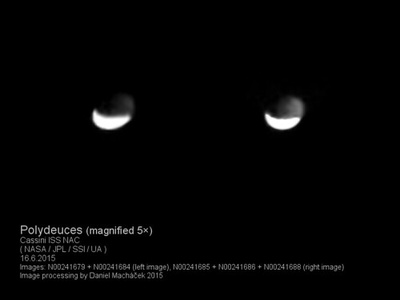
Polydeuces
The second of Dione’s Trojan moons, trailing 60 degrees behind it in a stable Lagrange point. It is one of the smallest and faintest of Saturn’s named moons.

Rhea
Saturn’s second-largest moon, a heavily cratered, airless ball of ice. Observations once hinted at a possible faint ring system of its own, but this has not been confirmed.
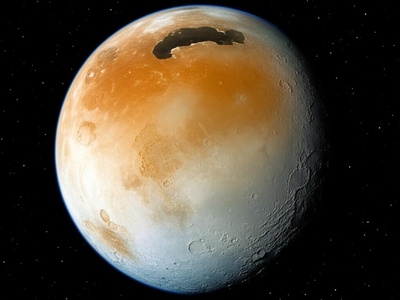
Titan
Saturn’s largest moon and the second-largest in the solar system. It is the only moon with a dense atmosphere and features liquid methane and ethane lakes, rivers, and seas on its surface.
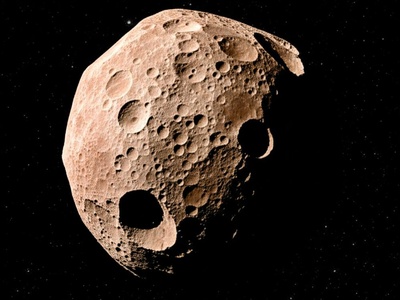
Hyperion
A bizarre, sponge-like moon with a chaotic, tumbling rotation instead of a smooth spin. Its porous, reddish surface is covered in deep, sharp-edged craters, giving it a very unusual appearance.

Iapetus
A moon of stark contrasts, with one hemisphere as bright as snow and the other as dark as coal. It also features a massive equatorial ridge, giving it a distinct walnut-like shape.

Kiviuq
An irregular prograde moon belonging to the Inuit group. Its reddish color suggests a composition different from Saturn’s inner moons, likely being a captured object from the Kuiper Belt.

Ijiraq
A member of the Inuit group of prograde irregular moons. It has a significantly redder hue than other moons in its group, suggesting a diverse origin for these captured bodies.
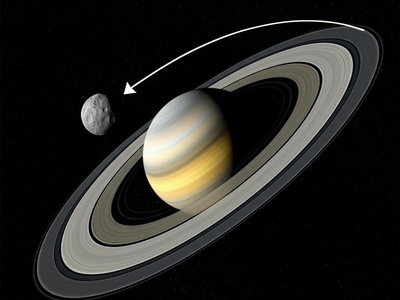
Phoebe
A large, dark irregular moon that orbits in the opposite direction of most of Saturn’s moons (retrograde). It is thought to be a captured Centaur from the outer solar system.
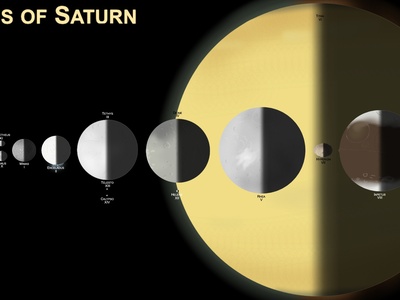
Paaliaq
A member of the Inuit group of prograde irregular satellites. Like other members of its group, it is named after a figure from Inuit mythology and likely has a captured origin.
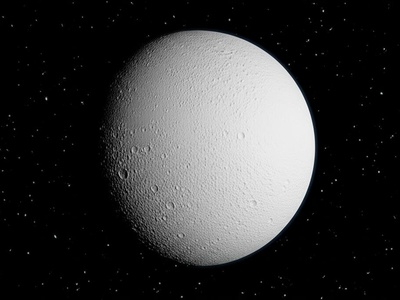
Skathi
A retrograde irregular moon and a member of the Norse group. It was discovered by a team using the Mauna Kea Observatory and is named after a figure in Norse mythology.
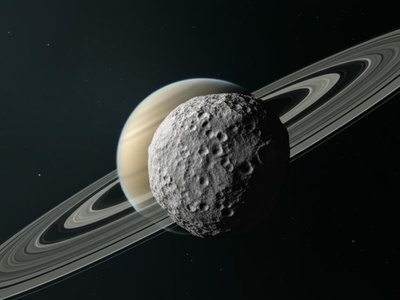
S/2004 S 37
A small, retrograde irregular moon belonging to the Norse group. It follows a distant, highly inclined, and eccentric orbit around Saturn, typical for captured satellites.
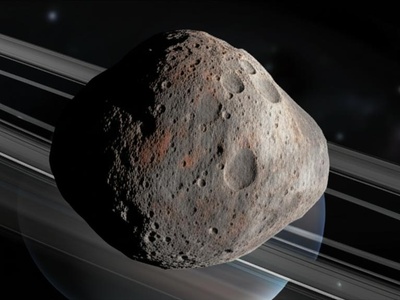
S/2007 S 2
An irregular moon with a retrograde orbit, placing it in the large Norse group. Its distant and inclined path around Saturn suggests it was captured from a heliocentric orbit.
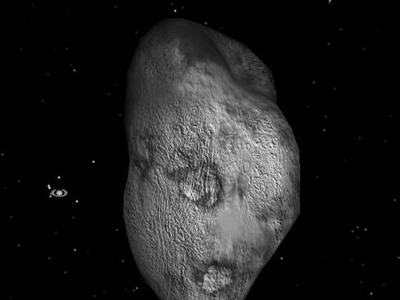
Albiorix
The largest member of the Gallic group of prograde irregular moons. It exhibits light-curve variations that suggest it has a highly irregular shape or large surface features.

Bebhionn
A prograde irregular moon and a member of the Gallic group. It was discovered during a series of observations in 2004 and is named after a goddess in Irish mythology.
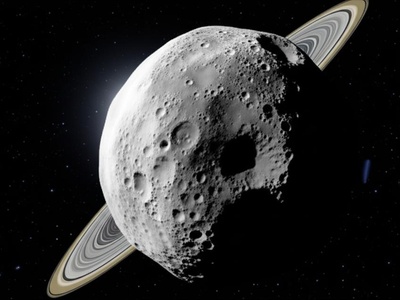
S/2004 S 29
A small irregular moon orbiting Saturn in a prograde direction. It is considered a member of the Inuit group based on its orbital characteristics of inclination and eccentricity.
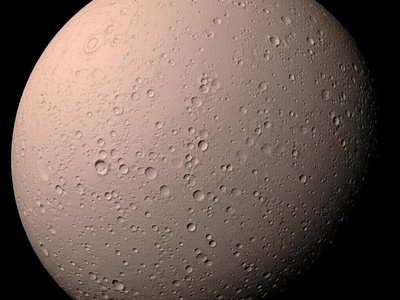
Erriapus
A prograde irregular moon belonging to the Gallic group. Its surface has a light reddish color, shared by other members of its group, suggesting a common origin.
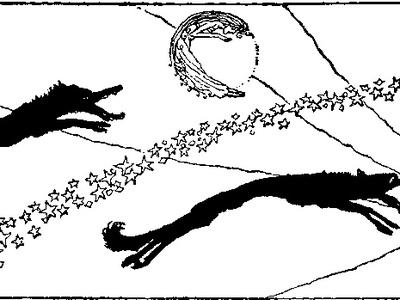
Skoll
A retrograde irregular moon and a member of the Norse group. It is named after a giant wolf in Norse mythology that chases the Sun, fitting for a distant, captured moon.
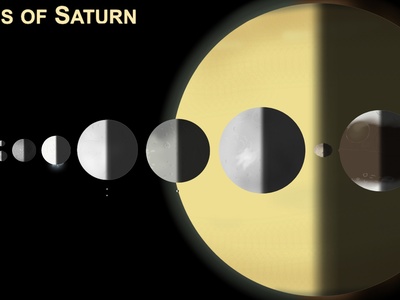
Siarnaq
The largest member of the Inuit group of prograde irregular moons. It is locked in a secular resonance with Saturn, causing its orbital elements to precess together.
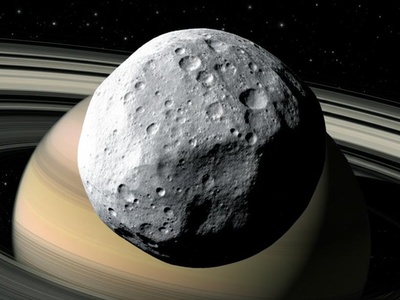
S/2004 S 13
A retrograde irregular moon and member of the Norse group. Its distant, eccentric orbit is a hallmark of objects captured by Saturn’s gravity early in the solar system’s history.

Hyrrokkin
A member of the Norse group, this irregular moon travels in a retrograde orbit. Its name comes from a giantess in Norse mythology who launched the funeral ship of Baldr.
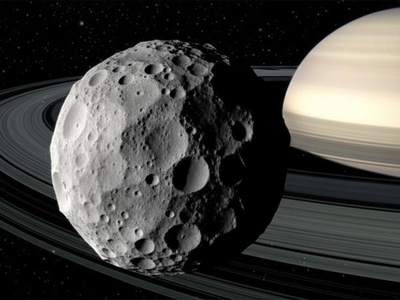
Tarvos
A prograde irregular moon belonging to the Gallic group. It has one of the most eccentric orbits among Saturn’s prograde moons, swinging it very near and far from the planet.
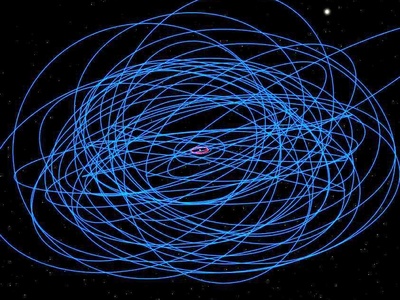
Mundilfari
A retrograde irregular moon and part of the Norse group. Its discovery was part of a major survey that vastly increased the number of known outer satellites of Saturn.

S/2006 S 1
A member of the Norse group of retrograde irregular moons. Its discovery by Scott Sheppard’s team helped fill in the picture of Saturn’s vast and complex satellite system.

Greip
An irregular retrograde moon in the Norse group. Like many of Saturn’s outer moons, it was discovered using advanced ground-based telescopes and digital imaging techniques.
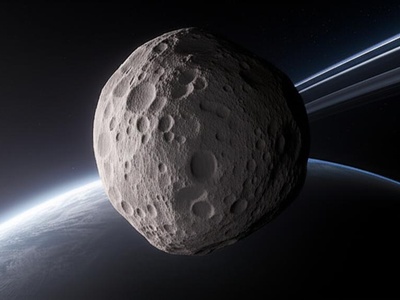
S/2004 S 17
A small retrograde irregular moon belonging to the Norse group. These moons are thought to be remnants of a larger body that was shattered by a collision.

Jarnsaxa
A retrograde irregular moon and a member of the Norse group. Its name, drawn from Norse mythology, refers to one of the nine mothers of Heimdallr.

Narvi
An irregular moon with a retrograde orbit, placing it in the Norse group. It appears to be in a stable resonance with Saturn, which helps to stabilize its distant orbit.

Bergelmir
A member of the Norse group of retrograde irregular satellites. It is named after a giant from Norse mythology who was the sole survivor of the flood caused by Ymir’s blood.

S/2004 S 20
A small irregular moon on a distant, retrograde path around Saturn. It’s a member of the Norse group, the largest and most diverse of the irregular satellite groups.

Hati
A retrograde irregular moon in the Norse group. In Norse mythology, Hati is a wolf that chases the Moon across the night sky, an apt name for a distant satellite.

S/2004 S 12
A retrograde irregular satellite and a member of the Norse group. Its great distance and inclined orbit are typical of moons that were captured by Saturn’s gravity.
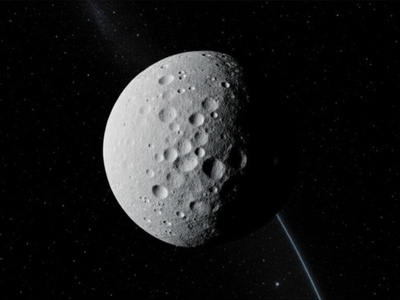
Farbauti
An irregular moon with a retrograde orbit, belonging to the Norse group. Its name comes from the storm giant who was Loki’s father in Norse mythology.
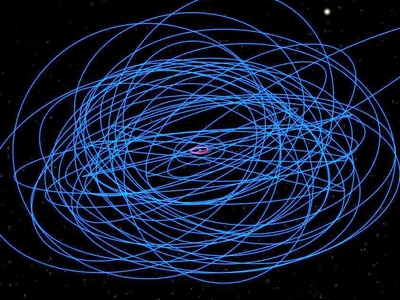
Suttungr
A retrograde irregular moon and a member of the Norse group. It is named after a Jötunn (giant) from Norse mythology who once owned the Mead of Poetry.

Thrymr
A retrograde irregular moon belonging to the Norse group. It has a highly eccentric and inclined orbit, suggesting it is a captured object, possibly from the Kuiper Belt.
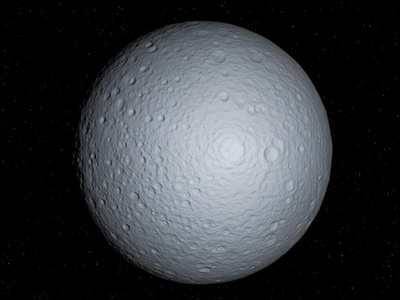
Bestla
A retrograde irregular moon and member of the Norse group. It is named after a giantess in Norse mythology, the mother of Odin, Vili, and Vé.
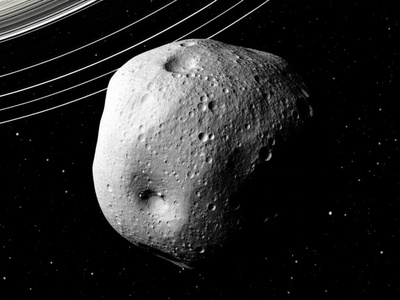
S/2004 S 7
A small irregular moon traveling in a retrograde orbit as part of the Norse group. Its discovery helped solidify the concept of dynamical families among Saturn’s outer moons.
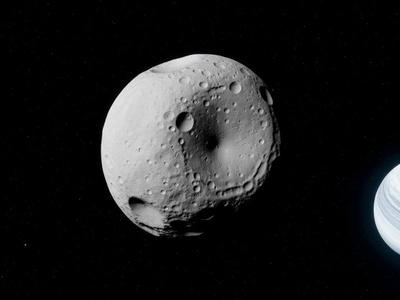
Aegir
A member of the Norse group of retrograde irregular moons. Named after the personification of the sea in Norse mythology, reflecting its distant, ocean-like orbit.
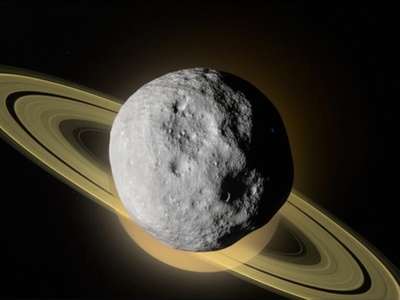
S/2007 S 3
An irregular retrograde moon and part of the vast Norse group. Its orbit is highly inclined relative to Saturn’s equator, a common trait for captured objects.
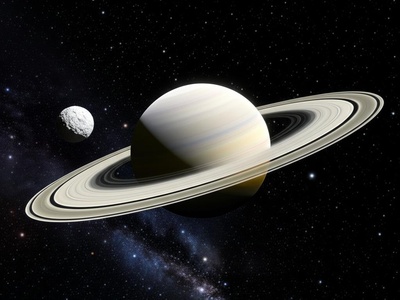
Kari
A retrograde irregular moon in the Norse group. Named for the personification of wind in Norse mythology, its distant orbit carries it far above and below Saturn’s equatorial plane.
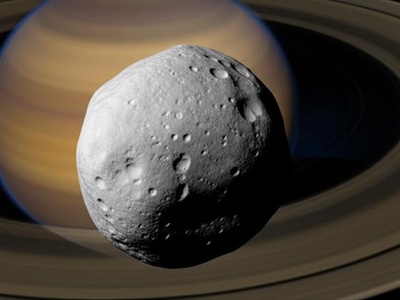
Fenrir
One of the most distant retrograde irregular moons of Saturn, belonging to the Norse group. It is named after the monstrous wolf from Norse mythology, a child of Loki.

Surtur
A retrograde irregular moon, part of the Norse group. It is named after Surtr, a fire giant from Norse mythology who plays a major role in the events of Ragnarök.
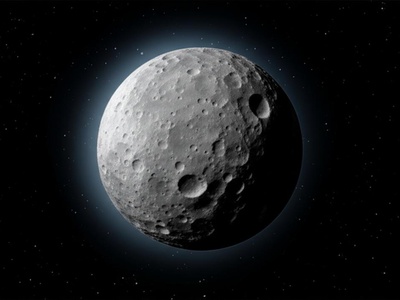
Ymir
One of the larger retrograde irregular moons in the Norse group. It was the first of the distant, irregular moons to be discovered around Saturn in the modern era of astronomy.
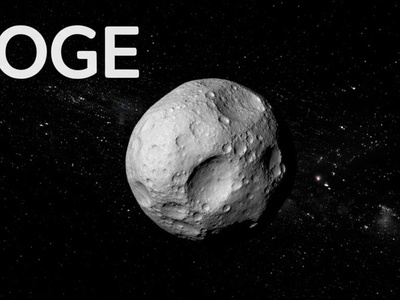
Loge
A retrograde irregular moon and a member of the Norse group. Named after a fire giant from Norse mythology, its distant orbit takes over three and a half Earth years to complete.
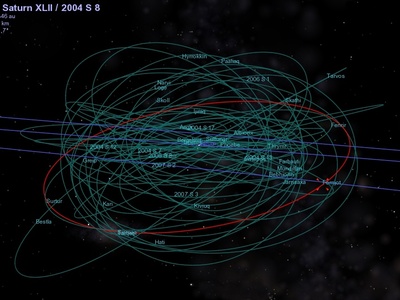
Fornjot
A retrograde irregular moon and member of the Norse group. It is one of Saturn’s most distant known satellites, with a long, looping orbit that is highly inclined.

S/2004 S 31
A small prograde irregular moon. It is classified as a member of the Inuit group based on its orbital inclination and other shared characteristics with moons like Kiviuq and Ijiraq.
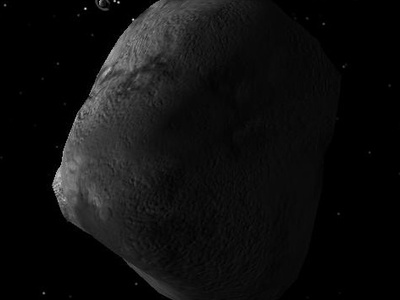
Tarqeq
A prograde irregular moon that belongs to the Inuit group. Its discovery helped further define this dynamical family of captured satellites that share similar orbits around Saturn.
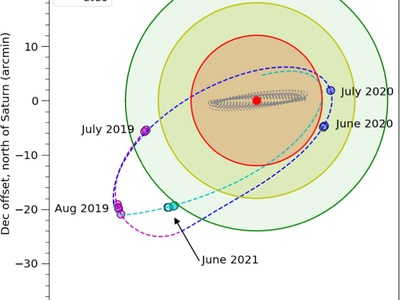
S/2019 S 1
A small prograde irregular moon, considered part of the Inuit group. Its discovery in 2019 was part of a new survey that expanded the count of Saturn’s known satellites.

S/2020 S 1
A small, prograde moon believed to be part of the Inuit group. It was identified in data from 2020, highlighting the ongoing effort to find all of Saturn’s tiny companions.
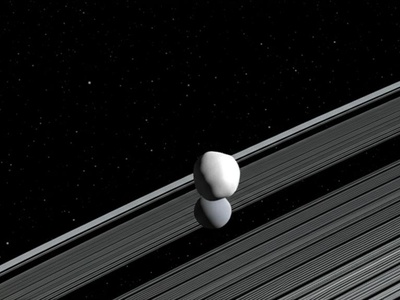
S/2005 S 4
A tiny, recently confirmed moonlet seen orbiting near the co-orbital moons Janus and Epimetheus. Its precise nature and stability are still under active investigation by astronomers.

S/2004 S 40
A prograde irregular satellite belonging to the Gallic group. These moons are thought to be fragments from a single larger body that was captured and then broke apart.
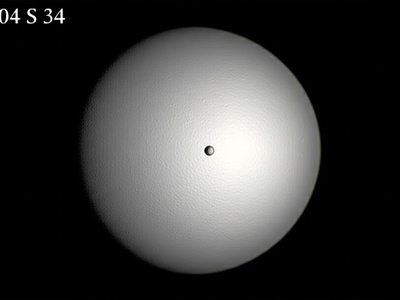
S/2004 S 34
A distant, retrograde moon that is part of the extensive Norse group. Like its siblings, its orbit is highly eccentric, taking it on a long journey around Saturn.
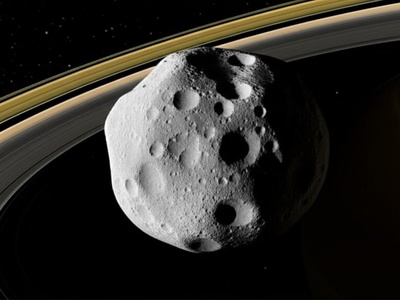
S/2004 S 22
A small retrograde irregular moon, classified as a member of the Norse group. Its discovery contributed to the understanding that Saturn’s satellite system is far more populated than once thought.

S/2004 S 27
A retrograde irregular moon belonging to the Norse group. These outer satellites are often grouped by their orbital characteristics, suggesting they share a common origin from a captured object.
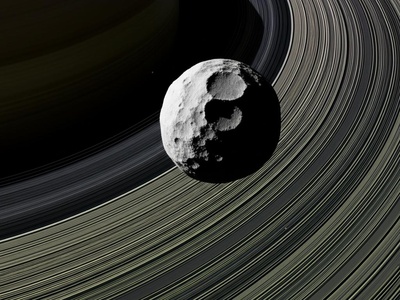
S/2004 S 32
A small, retrograde irregular moon that is part of the Norse group. It orbits far from Saturn on a highly inclined path, typical of captured asteroids or cometary nuclei.
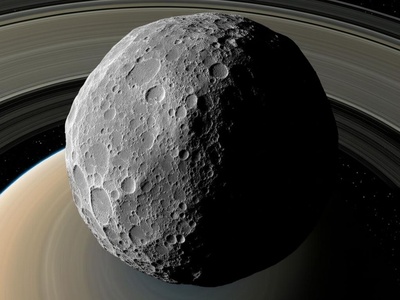
S/2004 S 25
A member of the Norse group of retrograde irregular moons. Its discovery was made possible by analyzing years of imaging data from powerful ground-based observatories.
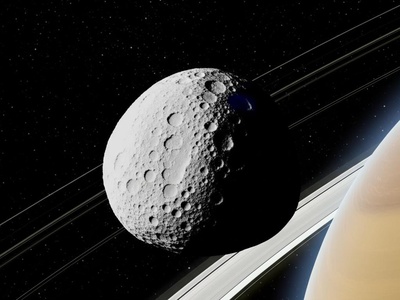
S/2004 S 30
A small, distant retrograde moon that belongs to the Norse group. Its highly inclined and eccentric orbit is a clear indicator that it did not form with Saturn’s main moons.

S/2004 S 35
A retrograde irregular moon and member of the Norse group. It takes several Earth years to complete one orbit around Saturn, traveling far above and below the planet’s ring plane.
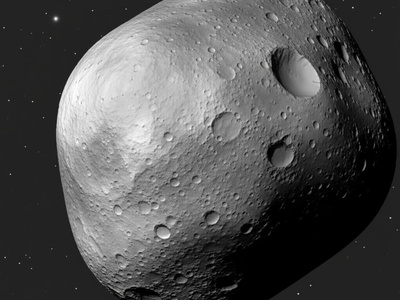
S/2004 S 23
A retrograde irregular moon belonging to the Norse group. It is one of dozens of small outer satellites discovered in the early 2000s, revolutionizing our view of Saturn’s system.

S/2004 S 28
A member of the Norse group of retrograde irregular moons. Its existence supports the theory that these groups are the shattered remains of larger parent bodies captured by Saturn.
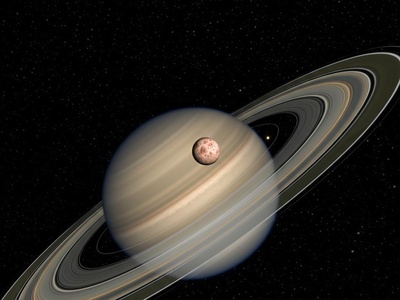
S/2004 S 38
A distant retrograde moon in the Norse group. It has one of the more eccentric orbits in its group, meaning its distance from Saturn varies significantly over its long year.
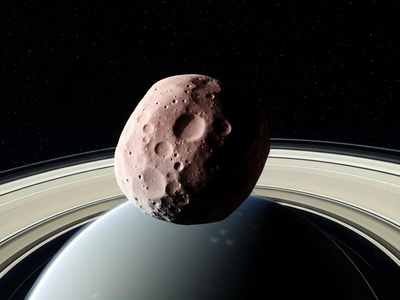
S/2004 S 24
A small retrograde irregular moon and a member of the Norse group. It likely has a dark, reddish surface, typical of captured objects from the outer solar system.

S/2004 S 33
A retrograde irregular moon, part of the Norse group. Its orbit is so large that it is more strongly influenced by the Sun’s gravity than many inner moons are.
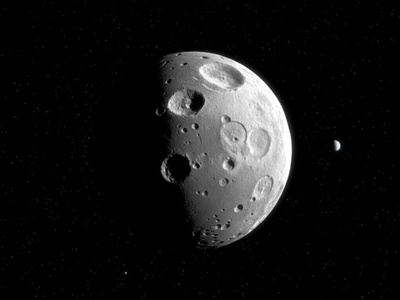
S/2004 S 36
A retrograde irregular moon in the Norse group, orbiting at a great distance from Saturn. These moons are believed to be collisional fragments of a larger captured object.
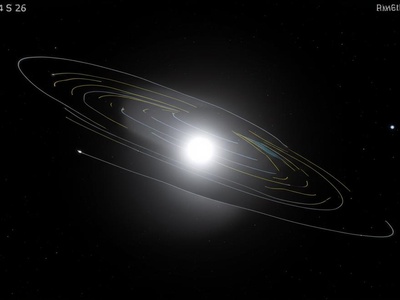
S/2004 S 26
A retrograde irregular moon in the Norse group. It has a very long orbital period, taking more than 1,300 Earth days to circle Saturn just once.
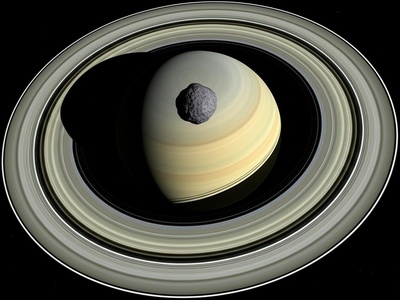
S/2004 S 4
A small retrograde satellite and member of the Norse group. Its name is provisional as it awaits an official mythological name from the International Astronomical Union.
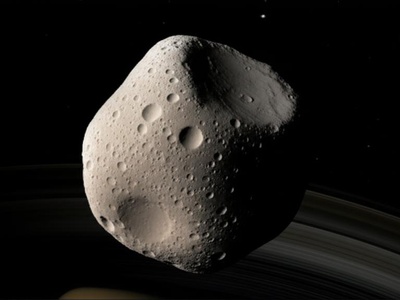
S/2004 S 6
A small, retrograde moon within the Norse group. It was discovered along with eleven other Saturnian moons in 2004 by a team led by Scott S. Sheppard.

S/2004 S 41
A prograde irregular satellite belonging to the Inuit group. Its orbital elements, such as its inclination, group it with other moons likely from a common captured parent body.
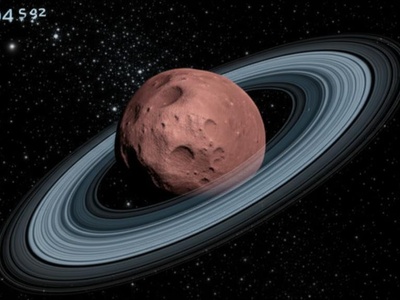
S/2004 S 42
A prograde irregular moon considered to be part of the Gallic group. Its reddish color and orbital path suggest it is a fragment of a larger body that was captured by Saturn.

S/2004 S 43
A retrograde irregular moon belonging to the Norse group. Its distant and highly inclined orbit is a telltale sign of a captured object, rather than one formed in place around Saturn.
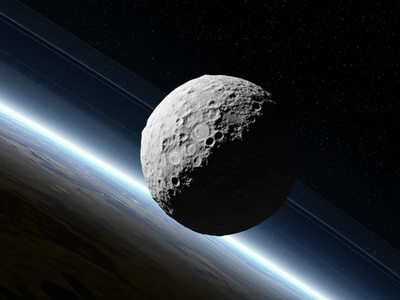
S/2004 S 44
A member of the Norse group of retrograde irregular satellites. Its discovery was part of a systematic survey to find faint, small objects in orbit around the gas giant.

S/2004 S 45
A small retrograde irregular moon in the Norse group. These moons are believed to be the shattered remnants of at least one larger body that was captured by Saturn’s gravity.
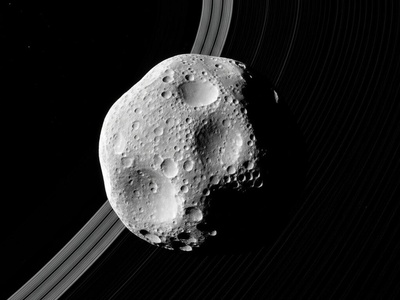
S/2004 S 46
A retrograde irregular moon belonging to the vast Norse group. Its orbit is highly eccentric, meaning its distance from Saturn varies significantly during its long orbital period.
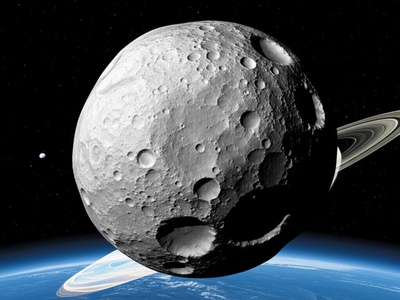
S/2004 S 47
A retrograde irregular moon, part of the Norse group. Like its siblings, it travels in an orbit that is tilted significantly with respect to Saturn’s equatorial plane.

S/2005 S 5
A distant retrograde moonlet, likely part of the Norse group. Its discovery in 2023 was announced from archival data, showing how many secrets Saturn’s system still holds.

S/2006 S 2
A prograde irregular moon. Its orbit is not cleanly associated with the main Inuit or Gallic groups, making its origin and history a point of interest for planetary scientists.
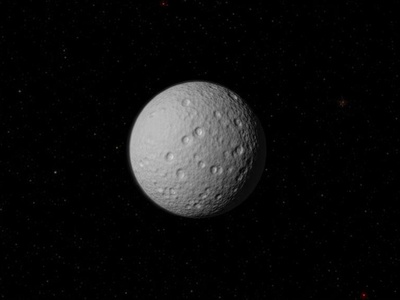
S/2006 S 3
A retrograde irregular moon and member of the Norse group. Named after Skoll in some contexts before official naming, it represents the large family of captured objects orbiting Saturn.

S/2006 S 4
A prograde irregular moon that belongs to the Inuit group. It shares a common orbital space with moons like Kiviuq and Ijiraq, suggesting a shared origin story.

S/2006 S 5
A prograde irregular moonlet belonging to the Gallic group. These moons are characterized by their moderately inclined, prograde orbits and are thought to be collisional fragments.
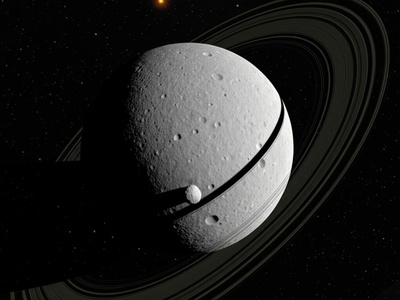
S/2006 S 6
A member of the Inuit group of prograde irregular moons. The grouping of these distant satellites by orbit helps scientists trace their history back to captured asteroids.
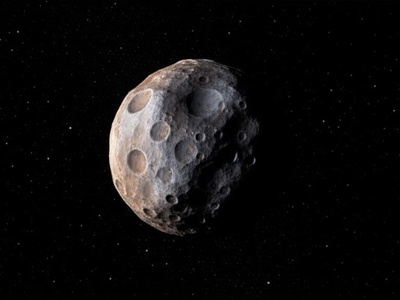
S/2006 S 7
A retrograde irregular moon and part of the Norse group. Its small size and great distance from Saturn made it a challenging target to detect from Earth.

S/2006 S 8
A retrograde irregular moon belonging to the Norse group. It is one of many such objects discovered by the Subaru Telescope, which has been instrumental in finding small outer satellites.

S/2006 S 9
A small retrograde moon in the Norse group, sharing a similar orbital space with Fenrir. These distant moons test the limits of Saturn’s gravitational control against the Sun’s pull.
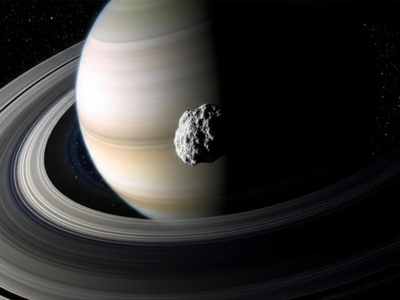
S/2006 S 10
A retrograde irregular satellite, part of the Norse group. Its discovery highlights the sheer number of small bodies that were captured by Saturn during the early solar system.
Enjoyed this article?
Get daily 10-minute PDFs about astronomy to read before bed!
Sign up for our upcoming micro-learning service where you will learn something new about space and beyond every day while winding down.

